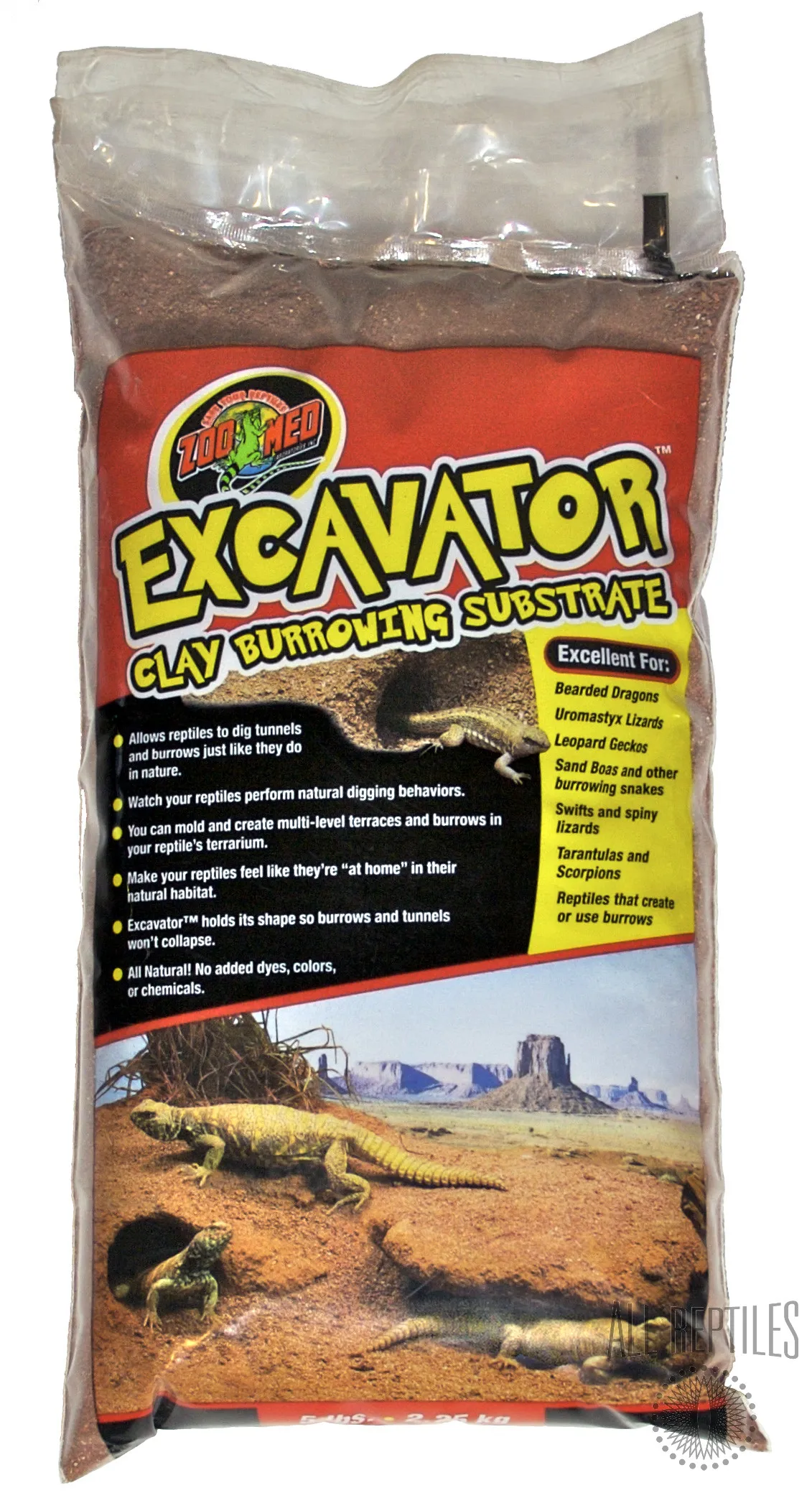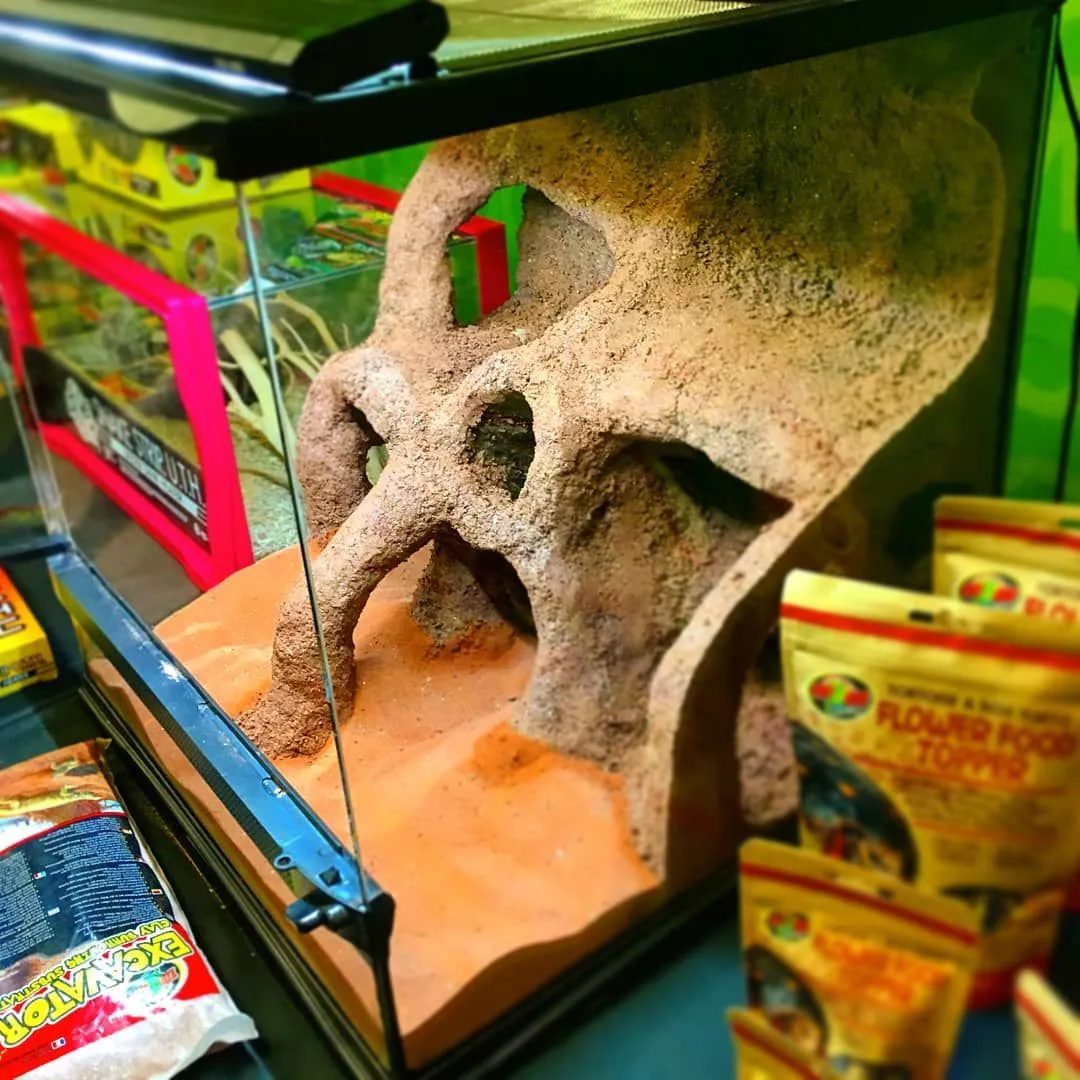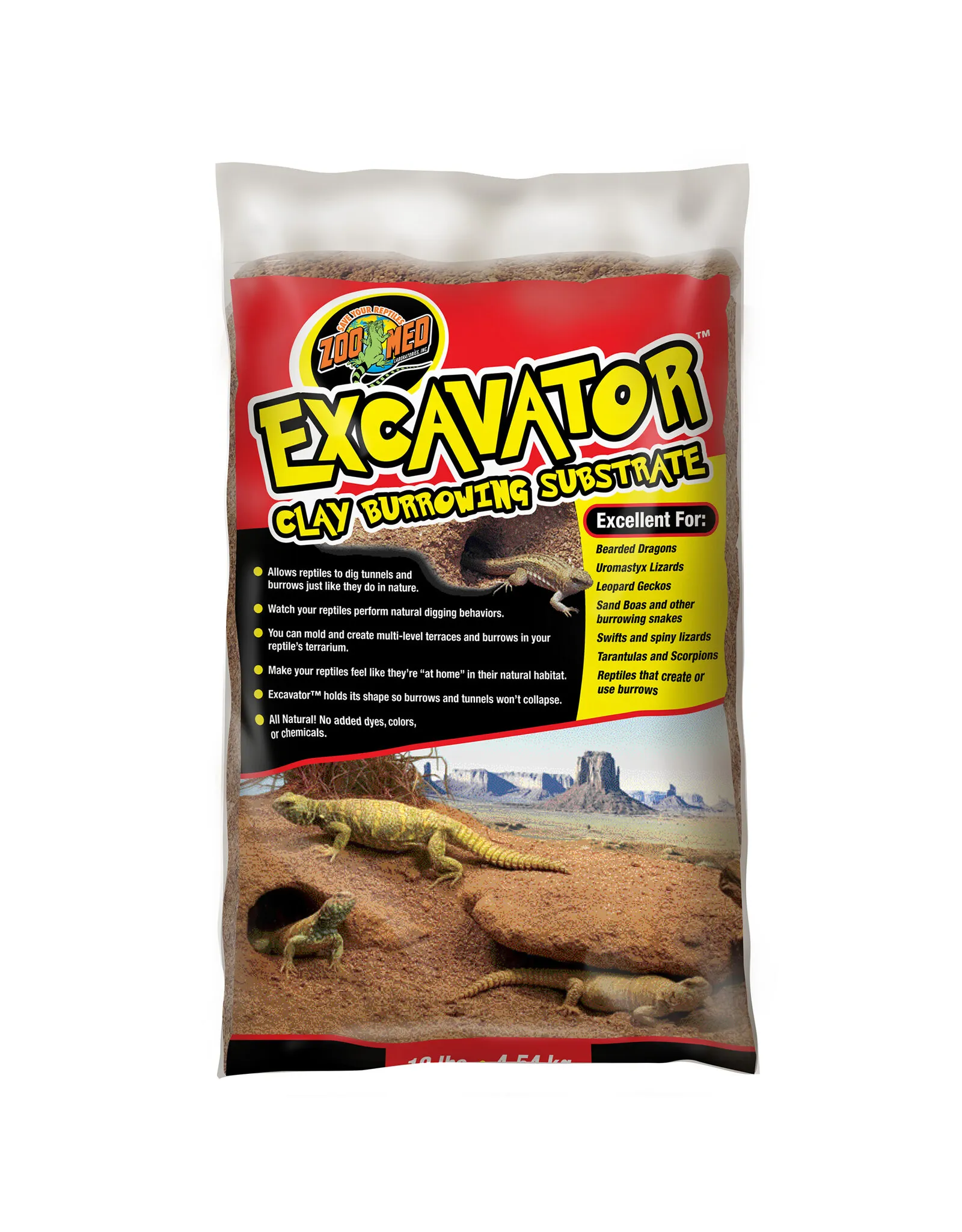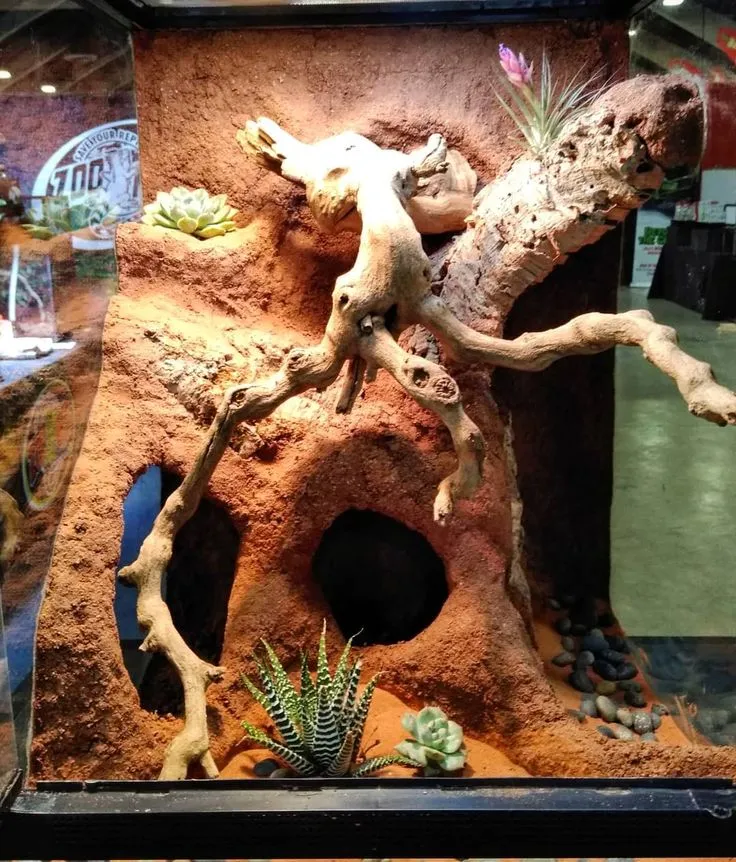What is Excavator Clay for Tarantulas
Excavator clay, in the context of tarantula care, is a specialized type of clay substrate used to create naturalistic and functional habitats. Unlike regular potting soil or sand, excavator clay allows tarantulas to express their natural burrowing behaviors, enriching their environment and promoting their well-being. It’s a carefully formulated mix designed to hold its shape when moistened, enabling tarantulas to dig tunnels and chambers that mimic their wild habitats. This substrate is not only aesthetically pleasing but also provides a sense of security for the tarantula, reducing stress and encouraging natural behaviors. The use of excavator clay marks a significant shift towards more bioactive and enriching setups for these fascinating creatures. It’s readily available at most pet stores specializing in reptile or invertebrate care, and the preparation process is straightforward, making it a favored choice among tarantula enthusiasts of all experience levels.
Benefits of Using Excavator Clay
The advantages of using excavator clay for tarantulas are numerous and multifaceted. Primarily, it allows tarantulas to engage in natural digging behaviors. In the wild, many tarantula species spend their lives in burrows they excavate themselves. Providing excavator clay gives them the means to replicate this behavior, which is crucial for their psychological health. It reduces stress and boredom, leading to healthier and more active tarantulas. Secondly, excavator clay helps maintain the correct humidity levels within the enclosure, which is vital for tarantulas’ molting process and overall health. The clay retains moisture effectively, creating a stable microclimate that supports the tarantula’s needs. Lastly, the use of clay enhances the aesthetic appeal of the enclosure, creating a more natural and visually engaging environment for both the tarantula and the observer. The ability to sculpt tunnels and chambers adds an artistic dimension to the enclosure design, fostering a deeper appreciation for these amazing arachnids.
Creating the Right Clay Mixture for Your Tarantula

Preparing the ideal clay mixture is a critical step in providing a suitable habitat for your tarantula. The quality of the clay and the method of mixing directly impact how well the tarantula can burrow and how effectively the habitat retains moisture. The goal is to create a mix that’s firm enough to hold its shape when burrowed, yet soft enough for the tarantula to manipulate. Remember to always prioritize the safety and well-being of the tarantula when choosing and preparing the substrate. Carefully consider the specific needs of your tarantula species, as these can influence the preferred substrate consistency and depth. When preparing clay, it is important to do it properly, since this is a very important step to ensure the tarantula’s health.
Selecting the Right Clay
When selecting excavator clay, it’s important to choose a product specifically designed for reptile or invertebrate habitats. These clays are often a blend of different clay types, such as bentonite or kaolin, and other ingredients that promote the ideal consistency and moisture retention. Avoid using generic clays from craft stores, as they may contain additives that are harmful to tarantulas. Look for clay that is free of fertilizers, pesticides, and other chemicals. Check reviews and recommendations from other tarantula keepers. If you are unsure, consult with a specialist or a trusted pet store employee to ensure the chosen clay is safe and appropriate for your specific tarantula species. Consider clay that is pre-mixed, as this will save you time and reduce the guesswork involved in creating a suitable substrate.
Mixing the Clay
Mixing the clay correctly is essential for creating a substrate that your tarantula can effectively burrow in. Start by following the manufacturer’s instructions for hydration, usually adding water gradually and mixing thoroughly until the clay reaches a desired consistency, which is similar to that of a firm but pliable mud. A good starting point is to add water until the clay holds its shape when squeezed but doesn’t crumble. It should be moist but not soggy. You can use a large container, like a tub or bucket, for mixing. A sturdy mixing tool, such as a trowel or your hands (with gloves), can be helpful. Mix thoroughly to ensure uniform hydration and consistency throughout the entire batch of clay. Be patient; it may take several minutes to get the desired result. Once the clay is mixed, let it sit for a few hours, as this allows the water to fully absorb into the clay particles.
Building Your Tarantula’s Clay Burrow

Constructing a clay burrow is a rewarding process that will greatly benefit your tarantula. It allows you to create a naturalistic and enriching environment. The key is to plan the enclosure setup, then carefully introduce the prepared clay. Remember to tailor the enclosure’s design to the specific needs of your tarantula species. Some species prefer deep burrows, while others prefer shallow ones. Proper planning before the actual construction is a key step, as it will make the process easier. Pay attention to the humidity levels and temperature, as these are crucial for the health and well-being of the tarantula. Before introducing the tarantula, make sure the setup is perfect and ready for the spider to move in.
Setting Up the Enclosure
Before introducing the clay, set up the enclosure with necessary features, such as a water dish and any other decorative elements. Make sure the enclosure is the right size for your tarantula. Provide proper ventilation to ensure air circulation and prevent the buildup of mold or mildew. Place the enclosure in a location away from direct sunlight or drafts to maintain stable temperatures. If needed, provide a heat source and a thermometer/hygrometer to monitor the conditions inside the enclosure. The presence of a water dish and some decor is important, but do not overcrowd the enclosure, as this can stress your tarantula. Plan where you will position the water dish and any other features. A well-planned enclosure will make the burrowing process smoother and more enjoyable for the tarantula.
Adding the Clay
Once the enclosure is prepared, it’s time to introduce the excavator clay. Carefully add the clay to the enclosure, aiming for a depth that suits your tarantula species. As a general rule, the depth of the substrate should be at least equal to the leg span of the tarantula. This will allow enough space for burrowing. You can add the clay in layers, gently compacting each layer to remove air pockets and ensure stability. Leave some space at the top for the tarantula to move around comfortably. After adding the clay, slightly moisten the surface with a spray bottle to activate it and allow the tarantula to start the excavation process. It is crucial that you do not over saturate the clay as this can lead to problems with mold or mildew. Add the clay in the enclosure to make sure there are no air pockets or instability.
Molding the Burrow

While some tarantulas will start excavating their burrows immediately, you can give them a head start by molding initial tunnels and chambers. Use tools like a small trowel or your fingers to create a basic structure, but avoid making the burrow too intricate. The goal is to provide a starting point and guide the tarantula’s digging efforts. Remember to respect the tarantula’s natural behavior, and do not interfere too much. Observe the tarantula and let it customize its burrow. Lightly mist the clay to maintain the correct moisture levels while you are molding the burrow. This will also help the clay hold its shape. The initial design you provide is only a suggestion, and your tarantula will likely alter it to its liking. Remember to create a safe environment, while allowing your tarantula to express its natural behaviors.
Maintaining the Clay Burrow
Proper maintenance is essential to ensure the clay burrow provides a healthy and stable environment for your tarantula. Regular monitoring of humidity and occasional cleaning and maintenance are necessary to prevent mold growth and ensure the long-term health of the enclosure. Be prepared to adjust your maintenance routine based on your tarantula’s specific needs. Keep a close eye on your tarantula’s behavior, as any changes can indicate problems within the enclosure. The goal is to create a low-maintenance environment where your tarantula can thrive. The burrow environment should be inspected frequently to ensure it is safe and healthy for your pet. Maintain the clay burrow correctly to keep your tarantula healthy and happy.
Monitoring Humidity
Maintaining the correct humidity is crucial for your tarantula’s health. The excavator clay helps regulate humidity by retaining moisture and gradually releasing it into the enclosure. Use a hygrometer to regularly monitor the humidity levels, making sure that they align with the specific needs of your tarantula species. You can increase humidity by misting the substrate lightly with a spray bottle, but avoid overwatering. Insufficient humidity can cause problems with the tarantula’s molting process, while excessive humidity can lead to mold growth and respiratory issues. Adjust the ventilation in the enclosure to maintain the desired humidity levels. If the enclosure is too dry, add moisture by misting the substrate. If the enclosure is too humid, increase ventilation to allow excess moisture to escape. Consistent monitoring is essential to keep the enclosure conditions optimal.
Cleaning and Maintenance

Regular cleaning and maintenance are essential for a healthy tarantula habitat. Remove any uneaten food items, molted skins, and fecal matter regularly, to prevent the buildup of bacteria and mold. You can spot-clean the clay substrate when needed, removing any visible debris or areas where mold may be forming. Avoid disturbing the burrow as much as possible, as excessive disturbance can stress the tarantula. Over time, the clay substrate may degrade, and you may need to replace it. When this occurs, carefully remove the tarantula to a temporary enclosure, remove the old substrate, and replace it with fresh, prepared clay. Reintroduce the tarantula to its clean and refreshed burrow. When cleaning the enclosure, always use appropriate safety precautions. These are important to ensure that both the tarantula and the keeper remain safe and healthy. Make sure to spot clean the substrate from time to time.
Troubleshooting Common Clay Burrow Issues
Even with proper care, you may encounter some issues when using excavator clay. Some of the most common problems are mold growth, substrate compaction, and burrow collapse. Act quickly if you notice any signs of these issues, as they can negatively impact your tarantula’s health. Understanding the root causes of these problems and taking appropriate actions is the best way to ensure your tarantula’s well-being. If you follow these steps, it should be easy to take care of your tarantula and its home. The goal is to create a safe, healthy, and comfortable environment for your tarantula to thrive. If you know how to identify these problems and solve them, it will be easier to take care of the pet and its clay burrow.
Mold growth can be caused by excessive humidity or poor ventilation. If you see mold, you should increase ventilation, reduce misting, and spot-clean the affected areas. Compaction of the clay can make it difficult for the tarantula to burrow. You can prevent this by ensuring the clay is mixed correctly and not overly compacted. Burrow collapse can occur if the clay is too dry or if the tarantula is burrowing in an area where the clay is unstable. You can prevent this by maintaining correct humidity levels and ensuring the clay is properly prepared. If you are having problems with your tarantula’s clay burrow, you can seek advice from experienced tarantula keepers or a specialist. They can offer valuable insights.
In conclusion, using excavator clay is an excellent way to provide a naturalistic and enriching environment for your tarantula. By understanding the benefits of excavator clay, how to create a suitable mixture, and how to maintain the burrow, you can ensure your tarantula’s health and happiness. With a little effort and the right knowledge, you can create a thriving habitat that allows your tarantula to express its natural behaviors and live a long, healthy life. Following the tips in this guide will help you provide the ideal environment for your tarantula. Embrace the opportunity to create a thriving environment for these amazing creatures. By understanding and implementing these practices, you will be well-equipped to provide a safe and fulfilling life for your tarantula.
